Yew: [Characteristics, Cultivation, Care and Disadvantages]
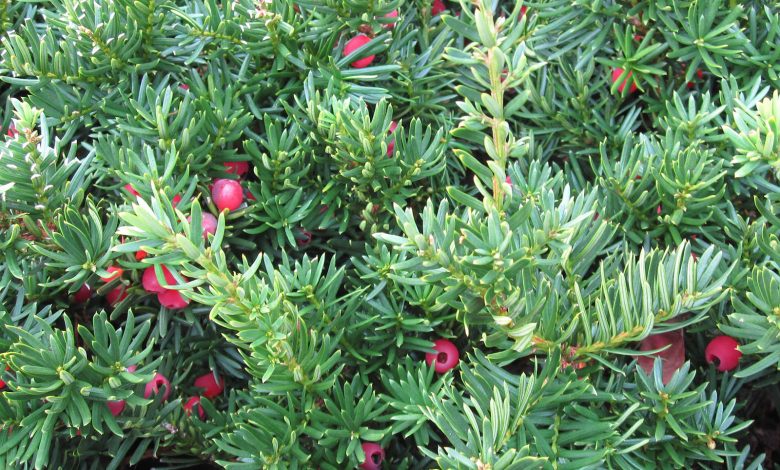
Important points when planting a Yew tree:
- When? The process of planting the yew tree can begin in the fall, shortly after summer (September) until the end of November.
- Where? Yew should be planted in those geographical areas where the seasons are well defined and, above all, in places where the temperature drops below zero degrees.
- How do we water? Watering should be moderate, but without flooding or drowning the plant.
- How often do we water? Water moderately throughout the year and only increase the amount of water during hot summers.
- What care does it require? The yew is a very slow-growing bush and requires some care for its development; for example, the soil must be fresh, light with a good drainage system and with a contribution of organic matter.
- What pests and diseases affect you? The yew plant can be affected by pests and diseases that attack most shrubby and coniferous varieties.
Careful with this! The yew is very poisonous.
The symptoms of poisoning with common or black yew are: dizziness, dry mouth, dilated pupils, extreme weakness, irregular heartbeat, thanks to the consumption of leaves and, to a lesser extent, seeds, which contain taxin, a very toxic alkaloid that can kill..
What characteristics does the yew plant have?
The yew plant (Taxus baccata) is a shrub of the taxaceae family and of the coniferous genus that can reach up to 20 meters in height.
It is a plant that develops in the humid forests of the European, North African and Western Asian mountains and in some mountains of Portugal.
It is a tree that has an irregular pyramid-shaped crown with branches that come out of its trunk and grow horizontally and very abundantly. The trunk can measure up to 1.5 meters in diameter and is characterized by being very thick with a thin reddish-brown and grayish bark.
The leaves of the yew are evergreen, placed in two opposite rows, dark green on the upper side and yellowish to glabrous on the underside, and measure from 10 to 30 mm. The yew is a dioecious, evergreen plant with male or female feet and belongs to the type of toxic conifers.
The males are globular with numerous stamens and generate a cone-shaped inflorescence that produces pollen. For their part, the yew specimens that are female develop the false fruit (seed covered by a cover) and their flowers are egg-shaped.
Its fruit is a fleshy berry that surrounds the seed, with an intense red color and a pleasant flavor. Every six or seven years the yew tree has an abundant production of fruit.
The yew produces a wood highly valued for its strength and flexibility, which makes it very suitable for cabinetmaking, although its slow growth limits its use.
Did you know…?It is said that yew wood was used to make bows in the Middle Ages, especially in the British Isles.
The yew tree maintains a long history of mysticism that has allowed it to perpetuate that air of mystery. For the Celts, the yew tree was considered sacred and was part of some of their rituals, probably due to the extraordinary longevity of the plant.
In Spain, the yew tree has been planted as a symbol of the transcendence of death, sheltered by hermitages, churches and cemeteries.
Especially in Asturias, the yew tree has been considered a direct link between the people and the land, the ancient religion and their ancestors. Hence, it was customary to bring a yew branch to the deceased, on All Saints’ Day, so that it would guide them on their return to the place of shadows.
When to sow the yew?
The planting process of the yew tree can be started in autumn, shortly after summer (September) until the end of November. Yew can be planted using cuttings or seeds that must undergo a prior germination process.
Where to plant the yew?
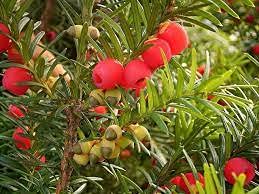 The planting of the yew must be carried out in those geographical areas where the seasons are well defined and especially in places where the temperature drops below zero degrees.
The planting of the yew must be carried out in those geographical areas where the seasons are well defined and especially in places where the temperature drops below zero degrees.
It is a plant that does not develop well in tropical or very hot climates.
How do we water the yew plant?
The yew plant needs constant moisture in the substrate for its development and slow growth. Watering should be moderate, but without flooding or drowning the plant.
How often do we water the yew plant?
Water moderately throughout the year and only increase the amount of water during hot summers. It is better to water less than more, especially when it comes to a plant of the yew variety that is very resistant.
How to plant a yew step by step?
The yew can be sown by seed, which provides a greater genetic richness to the new yew, or by cuttings from a plant that is healthy, strong and vigorous. By planting cuttings, a specimen of the same type as the mother plant can be reproduced.
- Select yew seeds that come from nearby trees from which a ripe fruit is removed that have a green to dark brown color.
- Make a mixture of peat and sand or soil from the garden and add a little mature manure.
- Sow directly in the ground, the seeds should be separated about 25 cm or in small containers and covered with two or three centimeters of soil.
- Water abundantly to maintain humidity, but without flooding the plant.
- Locate in semi-shade.
- Transplant when the time comes, although it will be necessary to wait months or perhaps years for it to germinate.
What care does the yew plant need?
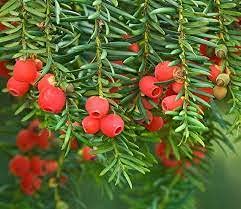 The yew is a very slow-growing shrub and requires some care for its development.
The yew is a very slow-growing shrub and requires some care for its development.
The soil for the yew plant must be fresh, light with a good drainage system and with a contribution of organic matter.
Chicken manure in the yew substrate favors the development of the plant, especially due to its richness in nitrogen. It develops very well in acid soils and also in calcareous ones.
The location for the cultivation of the yew can be in shaded areas and with a certain degree of environmental humidity. It is a plant that supports direct sun, as long as it is not excessively strong.
It does not require very deep and uncontrolled pruning, training pruning will suffice to remove dry leaves and branches. The yew plant does not require fertilizers, fertilizers or chemical herbicides that can compromise its development, just a little manure once a year.
What pests and diseases affect the yew plant?
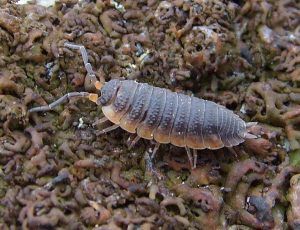 The yew plant can be affected by pests and diseases that attack most shrub and coniferous varieties.
The yew plant can be affected by pests and diseases that attack most shrub and coniferous varieties.
Among the pests are the mealybugs that stick their sucking beak on leaves, stems and fruits, drawing the sap from the yew tree.
The presence of mealybugs in the yew is observed by the appearance of dark spots and the interruption of flowering, which can generate the bold fungus.
Excess water can affect the roots and stems of the yew, causing rotting of its organs and the death of the plant, which is why it is important to water less than more.
An excess of acidity in the yew field can also cause very serious problems and even the death of the plant. Too much acidity causes yew leaves to change color from dark green to dull yellow and buds begin to drop.
The attack of pests can be prevented with the use of organic fertilizers and special and specific insecticides for each type of pest. If you have any doubts about the ways to eradicate pests in yew trees, it is necessary to consult a professional who can provide the appropriate treatment.
How long does the yew tree live?
It is a very long-lived tree that can reach 2000 years of life and much older specimens have even been found.
How long does it take to grow yew?
It is very slow growing, being able to grow only 20 to 30 cm per year in its youth and ceasing to grow tall during its old age.
This means that they can take between 10 and 15 years to fully grow.
How long does it take to produce fruit?
Due to its slow development, the yew takes a long time to bear fruit, so it is possible that it begins to produce between 20 and 50 years.
Can it be grown in a pot?
Yes, it can be grown in a pot. The detail is that it will not grow or have the same life time as under other growing conditions.
How many times does the yew produce fruit?
Once it begins to produce, this tree keeps generating fruit annually for a large part of its adult life.
Should the yew be pollinated to obtain fruit?
Yes, it needs pollination. However, it will be enough for the female specimens to be close to male specimens for it to occur.
How cold can yew tolerate?
It can tolerate temperatures below 0ºC, as well as long, dry winters. It is estimated that it can live very well in conditions of -18ºC.
How many yew trees can be planted per hectare?
Up to 200 yew trees can be planted in one hectare, keeping a suitable distance between one and the other.
What kind of fertilizer does yew need?
It is convenient to fertilize during the summer and spring with ecological fertilizer such as compost or guano to help keep it healthy.
How much heat and/or drought can yew tolerate?
It does not tolerate heat, being sensitive to increased temperatures. The maximum could be established at about 20ºC during the summer, for a short time.
The sporadic drought does not cause problems, but it cannot be long-lasting, since it does not tolerate it for too long.
Bibliographic references
- Taxus baccata L, PA Thomas, A Polwart – Journal of Ecology, 2003 – JSTOR
- Structural diversity of English yew (Taxus baccata L.) populations, H Ruprecht, A Dhar, B Aigner, G Oitzinger… – European Journal of…, 2010 – Springer
- Effects of Shade on Growth, Biomass Allocation and Leaf Morphology in the European Yew (Taxus baccata L.), PM Perrin, FJG Mitchell – European Journal of Forestry Research, 2013 – Springer
- Production of the anticancer drug taxol in Taxus baccata suspension cultures: a review, Malik S, Cusidó RM, Mirjalili MH, Moyano E … – Process…, 2011 – Elsevier
- The regeneration of the yew (Taxus baccata L.) is facilitated by bushes with fleshy fruits in Mediterranean environments, D García, R Zamora, JA Hódar, JM Gómez… – Biologico…, 2000 – Elsevier

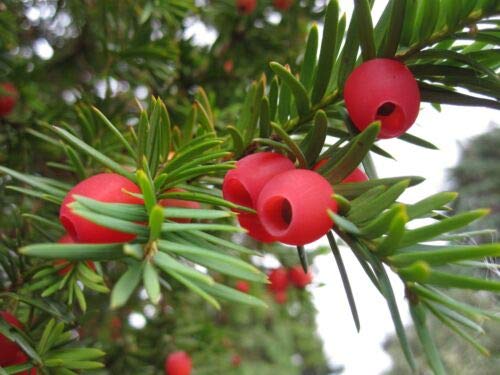
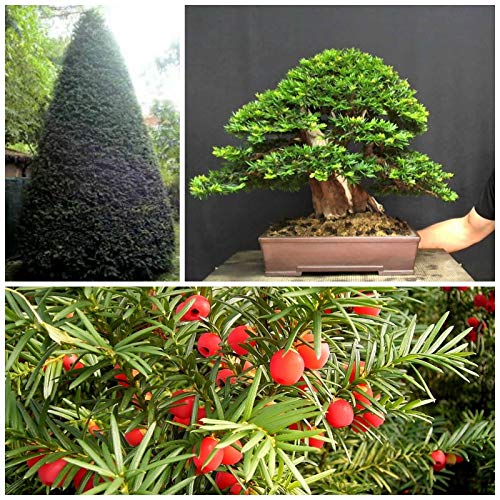

![Photo of Caring for Indoor Flowering Plants: [Humidity, Pruning and Problems]](https://www.complete-gardening.com/wp-content/uploads/2022/08/caring-for-indoor-flowering-plants-humidity-pruning-and-problems-390x220.png)

![Photo of Boldos: [Cultivation, Irrigation, Care, Pests and Diseases]](https://www.complete-gardening.com/wp-content/uploads/2022/08/boldos-cultivation-irrigation-care-pests-and-diseases-390x220.jpg)
![Photo of Peace Lilies: [Care, Sowing, Irrigation and Substrate]](https://www.complete-gardening.com/wp-content/uploads/2022/08/peace-lilies-care-sowing-irrigation-and-substrate-390x220.jpg)